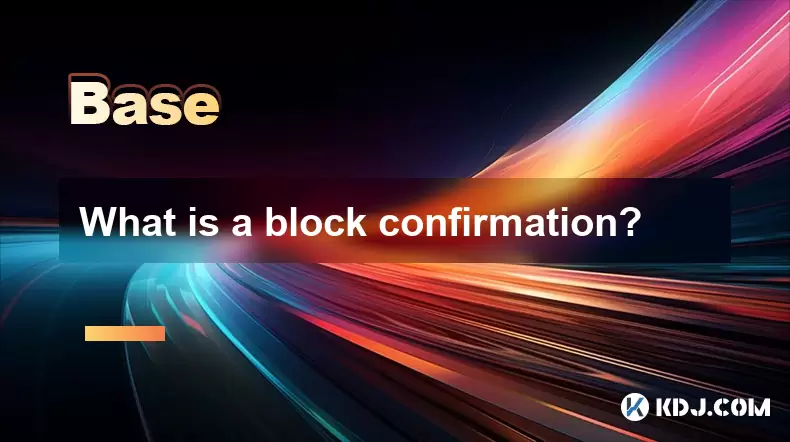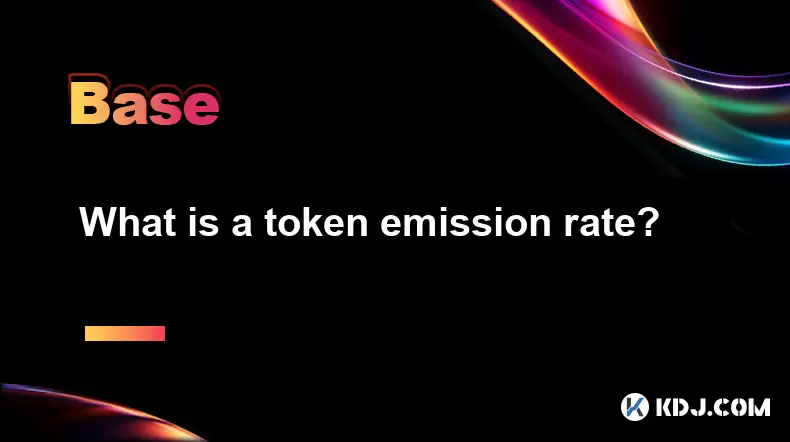-
 Bitcoin
Bitcoin $108,562.4295
0.46% -
 Ethereum
Ethereum $2,533.9553
1.52% -
 Tether USDt
Tether USDt $1.0002
-0.01% -
 XRP
XRP $2.2542
2.23% -
 BNB
BNB $662.4567
1.48% -
 Solana
Solana $151.4114
3.48% -
 USDC
USDC $0.9999
0.00% -
 TRON
TRON $0.2860
0.91% -
 Dogecoin
Dogecoin $0.1685
3.72% -
 Cardano
Cardano $0.5809
1.63% -
 Hyperliquid
Hyperliquid $39.2916
1.85% -
 Sui
Sui $2.8874
0.85% -
 Bitcoin Cash
Bitcoin Cash $496.5801
2.72% -
 Chainlink
Chainlink $13.3582
2.48% -
 UNUS SED LEO
UNUS SED LEO $9.0279
0.07% -
 Avalanche
Avalanche $18.0773
2.30% -
 Stellar
Stellar $0.2426
3.05% -
 Toncoin
Toncoin $2.9086
6.01% -
 Shiba Inu
Shiba Inu $0.0...01170
2.97% -
 Hedera
Hedera $0.1587
3.47% -
 Litecoin
Litecoin $87.4596
1.13% -
 Monero
Monero $317.0425
0.73% -
 Polkadot
Polkadot $3.3778
1.90% -
 Dai
Dai $0.9999
-0.01% -
 Ethena USDe
Ethena USDe $1.0001
-0.01% -
 Bitget Token
Bitget Token $4.4095
0.63% -
 Uniswap
Uniswap $7.3593
6.80% -
 Pepe
Pepe $0.0...09910
3.64% -
 Aave
Aave $274.7388
2.68% -
 Pi
Pi $0.4607
0.48%
What is a block confirmation?
Block confirmations enhance crypto transaction security, with more confirmations making tampering increasingly difficult.
Jul 07, 2025 at 04:42 am

Understanding Block Confirmation in Cryptocurrency
In the world of blockchain and cryptocurrency, block confirmation is a critical concept that ensures transaction integrity and network security. When a user initiates a crypto transaction, it doesn't become final immediately. Instead, it must be validated and added to a block by miners or validators. Once this block is created, it must receive confirmations from subsequent blocks to be considered secure.
The process starts with a transaction being broadcast to the network. Miners or validators then verify its legitimacy and include it in a new block. This initial inclusion is known as the first confirmation. However, for enhanced security, most systems require multiple confirmations before considering the transaction fully settled.
The Role of Confirmations in Security
Each time a new block is added to the chain after the one containing your transaction, an additional confirmation is added. The more confirmations a transaction has, the harder it becomes to alter or reverse it through malicious means like a 51% attack.
For example, if a transaction has six confirmations, it means five blocks have been added after the block containing the transaction. At this point, reversing the transaction would require re-mining not just the original block but all subsequent ones — a computationally expensive task.
Most exchanges and services use a standard of three to six confirmations for small to medium transactions, while larger transfers might require even more confirmations to ensure maximum security.
How Confirmations Work in Different Consensus Mechanisms
The mechanism behind confirmations varies depending on the consensus algorithm used by the blockchain. In Proof of Work (PoW) systems like Bitcoin, confirmations are generated as miners solve cryptographic puzzles to create new blocks. Each new block mined adds another confirmation to previous transactions.
In Proof of Stake (PoS) systems such as Ethereum 2.0, validators are chosen to create blocks based on the amount of cryptocurrency they stake. These validators attest to the validity of blocks, and each attestation contributes to the confirmation count.
Regardless of the system, the core principle remains the same: more confirmations mean higher immutability and resistance to tampering.
Checking Confirmations: A Practical Guide
If you're sending or receiving cryptocurrency, you can check how many confirmations your transaction has using a blockchain explorer. Here’s how:
- Go to a blockchain explorer associated with the specific cryptocurrency (e.g., blockchair.com for Bitcoin).
- Paste the transaction hash (TXID) into the search bar.
- Look for the "confirmations" field next to your transaction details.
Some wallets also display this information directly within the transaction history. If you're using a hardware wallet or a mobile app, tap into the transaction detail screen to view confirmation status.
This feature allows users to verify transaction finality without needing technical expertise.
Why Some Transactions Take Longer to Confirm
Not all transactions get confirmed at the same speed. Several factors influence how quickly a transaction receives confirmations:
- Network congestion: During high traffic periods, there may be a backlog of unconfirmed transactions waiting to be included in a block.
- Transaction fees: Users who pay higher fees usually get prioritized by miners or validators, leading to faster confirmations.
- Block time: Each blockchain has a set average time between blocks (e.g., Bitcoin's block time is around 10 minutes, while Ethereum's is about 15 seconds).
By adjusting the fee you're willing to pay, you can influence how quickly your transaction gets picked up and confirmed. Most modern wallets allow manual fee adjustment or offer smart suggestions based on current network conditions.
Frequently Asked Questions
Q: Can a transaction with zero confirmations be reversed?
A: Yes, a transaction with zero confirmations exists only in the mempool and hasn't been included in any block yet. It can be replaced or canceled under certain conditions, especially if the sender uses Replace-by-Fee (RBF) or Child-Pays-for-Parent (CPFP) techniques.
Q: What happens if a transaction gets stuck with low confirmations?
A: If a transaction remains with very few confirmations for a long time, it could indicate a network issue or a low fee. You may need to rebroadcast the transaction with a higher fee or wait until network congestion decreases.
Q: Is there a universal number of confirmations required for all cryptocurrencies?
A: No, different cryptocurrencies and platforms may require varying numbers of confirmations. For instance, Bitcoin typically requires 3–6, while Litecoin may accept 5–10, and Ethereum-based tokens often settle with 12–30.
Q: Do all wallets show the number of confirmations?
A: Most reputable software and hardware wallets do display confirmation counts. However, some lightweight wallets or custodial services might abstract this detail from the user interface for simplicity.
Disclaimer:info@kdj.com
The information provided is not trading advice. kdj.com does not assume any responsibility for any investments made based on the information provided in this article. Cryptocurrencies are highly volatile and it is highly recommended that you invest with caution after thorough research!
If you believe that the content used on this website infringes your copyright, please contact us immediately (info@kdj.com) and we will delete it promptly.
- Elon Musk, Andrew Yang, and Polymarket: What's the Buzz?
- 2025-07-07 10:30:12
- Lightchain AI's Bonus Round: The Final Chance Before Mainnet & Ecosystem Tools
- 2025-07-07 10:30:12
- TON Foundation, UAE Golden Visa, and Toncoin Staking: A New Chapter in Crypto Residency?
- 2025-07-07 10:50:12
- Altcoin Prices, Institutional Investors, and the Ethereum Rotation: What's the Deal?
- 2025-07-07 10:50:12
- TON Coin, Golden Visa, and UAE Denial: What's the Real Deal?
- 2025-07-07 10:55:12
- PEPE's Bullish Trend: Riding the 50% Gain Wave?
- 2025-07-07 10:55:12
Related knowledge

What is a user-generated content (UGC) NFT platform?
Jul 04,2025 at 01:49pm
Understanding the Concept of a UGC NFT PlatformA user-generated content (UGC) NFT platform is a digital marketplace or ecosystem where users can create, mint, and trade non-fungible tokens (NFTs) that represent ownership of original digital content they produce. Unlike traditional NFT platforms where creators often include professional artists or develo...

What is composability in DeFi?
Jul 06,2025 at 04:07pm
Understanding the Concept of Composability in DeFiComposability in DeFi refers to the ability of decentralized finance protocols and smart contracts to interact seamlessly with one another, much like building blocks that can be combined in various ways to create new financial products and services. This concept is a core innovation within the DeFi ecosy...

What is a "crypto primitive"?
Jul 05,2025 at 10:14pm
Defining the Concept of a Crypto PrimitiveIn the context of blockchain and cryptocurrency, a crypto primitive refers to a fundamental building block or foundational element used in constructing decentralized systems and cryptographic protocols. These primitives are essential for enabling secure transactions, consensus mechanisms, and smart contract exec...

What is a fair launch?
Jul 05,2025 at 07:31pm
Understanding the Concept of a Fair LaunchA fair launch refers to the release of a cryptocurrency or blockchain project in a manner that ensures equal opportunity for all participants. Unlike traditional token launches, which may involve private sales, venture capital funding, or pre-mining, a fair launch emphasizes transparency and decentralization. In...

What is a token emission rate?
Jul 07,2025 at 02:51am
Understanding the Basics of Token Emission RateIn the realm of cryptocurrencies, token emission rate refers to the speed or frequency at which new tokens are generated and released into circulation within a blockchain network. This concept is fundamental in understanding how certain blockchain ecosystems manage inflation, incentivize participants, and m...

What is a cliff in tokenomics?
Jul 05,2025 at 07:18pm
Understanding the Concept of a Cliff in TokenomicsIn the world of cryptocurrency and blockchain, tokenomics plays a pivotal role in shaping the economic behavior of a digital asset. One of the key mechanisms used to manage token distribution is known as a cliff. This concept is commonly applied in projects that include vesting schedules for tokens, espe...

What is a user-generated content (UGC) NFT platform?
Jul 04,2025 at 01:49pm
Understanding the Concept of a UGC NFT PlatformA user-generated content (UGC) NFT platform is a digital marketplace or ecosystem where users can create, mint, and trade non-fungible tokens (NFTs) that represent ownership of original digital content they produce. Unlike traditional NFT platforms where creators often include professional artists or develo...

What is composability in DeFi?
Jul 06,2025 at 04:07pm
Understanding the Concept of Composability in DeFiComposability in DeFi refers to the ability of decentralized finance protocols and smart contracts to interact seamlessly with one another, much like building blocks that can be combined in various ways to create new financial products and services. This concept is a core innovation within the DeFi ecosy...

What is a "crypto primitive"?
Jul 05,2025 at 10:14pm
Defining the Concept of a Crypto PrimitiveIn the context of blockchain and cryptocurrency, a crypto primitive refers to a fundamental building block or foundational element used in constructing decentralized systems and cryptographic protocols. These primitives are essential for enabling secure transactions, consensus mechanisms, and smart contract exec...

What is a fair launch?
Jul 05,2025 at 07:31pm
Understanding the Concept of a Fair LaunchA fair launch refers to the release of a cryptocurrency or blockchain project in a manner that ensures equal opportunity for all participants. Unlike traditional token launches, which may involve private sales, venture capital funding, or pre-mining, a fair launch emphasizes transparency and decentralization. In...

What is a token emission rate?
Jul 07,2025 at 02:51am
Understanding the Basics of Token Emission RateIn the realm of cryptocurrencies, token emission rate refers to the speed or frequency at which new tokens are generated and released into circulation within a blockchain network. This concept is fundamental in understanding how certain blockchain ecosystems manage inflation, incentivize participants, and m...

What is a cliff in tokenomics?
Jul 05,2025 at 07:18pm
Understanding the Concept of a Cliff in TokenomicsIn the world of cryptocurrency and blockchain, tokenomics plays a pivotal role in shaping the economic behavior of a digital asset. One of the key mechanisms used to manage token distribution is known as a cliff. This concept is commonly applied in projects that include vesting schedules for tokens, espe...
See all articles

























































































